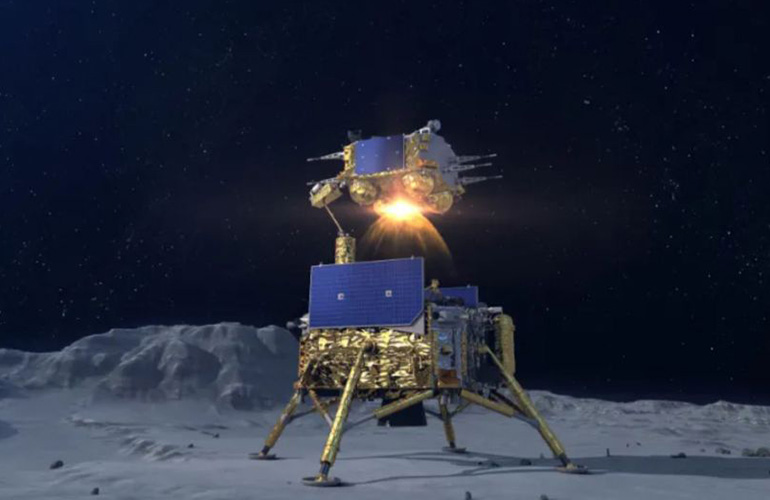|
Listen to this article  |

Chang’e 5 has four modules, a service module, return vehicle, lander and ascent unit. | Source: CNSA/CLEP
China’s Chang’e 5 lunar lander became the first to discover water on the moon on-site and in real time.
Water was first discovered on the moon from orbit in 2009 by India’s Chandrayaan-1 mission. The team used NASA’s Moon Mineralogy Mapper instrument to definitively detect water. Since then, water has been extensively mapped from orbit in missions like NASA’s Lunar Reconnaissance Orbiter.
The Chang’e 5 lander used its mineralogical spectrometer, which was specifically designed for finding water, to detect the water. It did so by determining spectral reflectance measurements of soil and rocks on the moon.
The water on the moon is believed to be from deposition from solar wind, a constant stream of charged particles coming from the sun. It was found near the Oceanus Procellarum on the moon’s near side.
Chang’e 5 landed on the moon on December 1, 2020 with a mission to collect lunar rocks and soil to bring back to Earth. This is China’s first ever sample return mission, however the country has had four successful robotics missions to the moon before the Chang’e 5.
The lander was on the surface for less than 48 hours before it headed back into orbit around the moon. The lander returned to Earth on December 16. It is the first lander to bring samples back from the moon since the Soviet Lunar 24 probe in 1976.
The joint research team behind the lander is led by Professors Lin Yangting and Lin Honglei from the Institute of Geology and Geophysics at the Chinese Academy of Sciences (CAS). It also involved researchers from the National Space Science Center at CAS, the University of Hawai’i at Mānoa, the Shanghai Institute of Technical Physics at CAS and Nanjing University.
China is the third country to bring samples back from the moon, after the United States and the Soviet Union. In 2023, China plans to launch the Chang’e 6. The lander is meant to be a backup to the Chang’e 5, but it will head to the lunar south pole for samples.
Credit: Source link


Comments are closed.